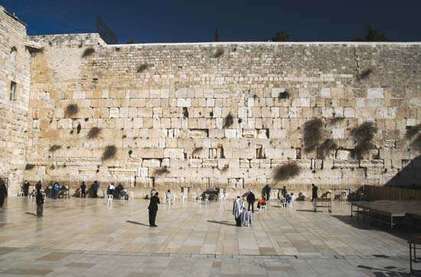
Jerusalem – ירושלים
Today Jerusalem is a city of old and new and a mixture of religions, spirituality and history with modern day life and culture.
Jerusalem (Yerushalayim in Hebrew) is considered one of the most ancient cities in the world. The beauty of Jerusalem inspires millions of people around the world and has given her the well known title of the city of gold.
Located in the Judean Mountains, Jerusalem is known for its fresh mountain air. There are many faiths, opinions, religions, mysteries surrounding Jerusalem and different faiths must learn to coexist to share one holy city. It seems natural to shift between thousands of years within a few footsteps of the streets of Jerusalem.
JERUSALEM HISTORY
The history of Jerusalem dates back 3,000 years, to when King David conquered Jerusalem and crowns her as his capital city. He built in Jerusalem his royal palace, which today can be seen in the City of David. According to tradition, King David dreamed of building a magnificent temple dedicated to God but it was his son, King Solomon, who built the First Temple on Mount Moriah, known today as the Temple Mount. After King Solomon's death, Israel was divided and Jerusalem became the capital of Judah. It was ruled by many kings. In 586 BC, Jerusalem and the Holy Temple were completely destroyed by the Babylonians and Nebuchadnezzar. 50 years later, in 538 BC, Jews were allowed by Persian King Cyprus the Great to return to Jerusalem from their exile and build the temple. The Second Temple was built in 516 BC and stood for over 5 centuries until its destruction in 70 CE by the Roman Empire. By that time, Jerusalem was destroyed and the Jews were enslaved and sent to exile throughout the Roman Empire.
Through its long intensive history, Jerusalem has endured destruction, construction, attacks and besieges and has changed hands many times between kings, governors and different rulers. As a holy city for Jews, Christians and Muslims, Jerusalem has always been a place of pilgrimage and a source of war.
OLD CITY OF JERUSALEM
The Old city of Jerusalem is the pounding heart of Jerusalem both historically and spiritually. It is surrounded by walls that were built in 1538 by the Muslim Ottoman Empire Sultan Suleiman the Magnificent. Nowadays, the old city of Jerusalem is culturally divided into four Quarters: the Jewish Quarter (the center of Jewish life in the old city), the Armenian Quarter, the Christian Quarter and the largest of
them all – The Muslim Quarter.
Jerusalem stands on hills at an elevation of 2,575 feet (785 metres). The modern unified city is the largest municipality in Israel or the West Bank and is the heart of an urban agglomeration that spills outside the city limits into adjacent areas of both jurisdictions. At the center of the modern municipality is the Old City, a walled medieval enclosure of less than half a square mile (roughly one square km), from which the entire city has grown.
To the east the city looks down on the Dead Sea and across the Jordan River to the arid mountains of eastern Jordan (the biblical mountains of Moab). To the west it faces the coastal plain and the Mediterranean Sea, about 35 miles (60 km) away.
Jerusalem is the center of Jewish religious reverence and aspiration. The most sacred spot is the Temple Mount, on which many Orthodox Jews refrain from setting foot for fear of profaning the sanctity of the site where once stood the most sacred Holy of Holies. In addition to the Western Wall—the most important center of prayer and pilgrimage—other holy places include the reputed tomb of King David on Mount Zion, the Mount of Olives with its ancient Jewish cemetery, and the tombs of priestly families in the Valley of Kidron. Old synagogues and study houses in the Old City have been refurbished; particularly worthy of mention is the interconnected group of four synagogues begun in the 16th century by Jews exiled from Spain.
West Jerusalem, the area to the west of the Old City, where the new city has been built recently, is home to a number of interesting places including Yad Vashem, Israel’s Holocaust Memorial. the Israel Museum, and the Knesset (Israeli parliament building).
Jerusalem’s newest trendy area is the Old Train Station Compound. On the city’s outskirts, this area has recently been transformed with a fashionable selection of restaurants, and bars, alongside a courtyard hosting cultural events
Today Jerusalem is a city of old and new and a mixture of religions, spirituality and history with modern day life and culture.
Jerusalem (Yerushalayim in Hebrew) is considered one of the most ancient cities in the world. The beauty of Jerusalem inspires millions of people around the world and has given her the well known title of the city of gold.
Located in the Judean Mountains, Jerusalem is known for its fresh mountain air. There are many faiths, opinions, religions, mysteries surrounding Jerusalem and different faiths must learn to coexist to share one holy city. It seems natural to shift between thousands of years within a few footsteps of the streets of Jerusalem.
JERUSALEM HISTORY
The history of Jerusalem dates back 3,000 years, to when King David conquered Jerusalem and crowns her as his capital city. He built in Jerusalem his royal palace, which today can be seen in the City of David. According to tradition, King David dreamed of building a magnificent temple dedicated to God but it was his son, King Solomon, who built the First Temple on Mount Moriah, known today as the Temple Mount. After King Solomon's death, Israel was divided and Jerusalem became the capital of Judah. It was ruled by many kings. In 586 BC, Jerusalem and the Holy Temple were completely destroyed by the Babylonians and Nebuchadnezzar. 50 years later, in 538 BC, Jews were allowed by Persian King Cyprus the Great to return to Jerusalem from their exile and build the temple. The Second Temple was built in 516 BC and stood for over 5 centuries until its destruction in 70 CE by the Roman Empire. By that time, Jerusalem was destroyed and the Jews were enslaved and sent to exile throughout the Roman Empire.
Through its long intensive history, Jerusalem has endured destruction, construction, attacks and besieges and has changed hands many times between kings, governors and different rulers. As a holy city for Jews, Christians and Muslims, Jerusalem has always been a place of pilgrimage and a source of war.
OLD CITY OF JERUSALEM
The Old city of Jerusalem is the pounding heart of Jerusalem both historically and spiritually. It is surrounded by walls that were built in 1538 by the Muslim Ottoman Empire Sultan Suleiman the Magnificent. Nowadays, the old city of Jerusalem is culturally divided into four Quarters: the Jewish Quarter (the center of Jewish life in the old city), the Armenian Quarter, the Christian Quarter and the largest of
them all – The Muslim Quarter.
Jerusalem stands on hills at an elevation of 2,575 feet (785 metres). The modern unified city is the largest municipality in Israel or the West Bank and is the heart of an urban agglomeration that spills outside the city limits into adjacent areas of both jurisdictions. At the center of the modern municipality is the Old City, a walled medieval enclosure of less than half a square mile (roughly one square km), from which the entire city has grown.
To the east the city looks down on the Dead Sea and across the Jordan River to the arid mountains of eastern Jordan (the biblical mountains of Moab). To the west it faces the coastal plain and the Mediterranean Sea, about 35 miles (60 km) away.
Jerusalem is the center of Jewish religious reverence and aspiration. The most sacred spot is the Temple Mount, on which many Orthodox Jews refrain from setting foot for fear of profaning the sanctity of the site where once stood the most sacred Holy of Holies. In addition to the Western Wall—the most important center of prayer and pilgrimage—other holy places include the reputed tomb of King David on Mount Zion, the Mount of Olives with its ancient Jewish cemetery, and the tombs of priestly families in the Valley of Kidron. Old synagogues and study houses in the Old City have been refurbished; particularly worthy of mention is the interconnected group of four synagogues begun in the 16th century by Jews exiled from Spain.
West Jerusalem, the area to the west of the Old City, where the new city has been built recently, is home to a number of interesting places including Yad Vashem, Israel’s Holocaust Memorial. the Israel Museum, and the Knesset (Israeli parliament building).
Jerusalem’s newest trendy area is the Old Train Station Compound. On the city’s outskirts, this area has recently been transformed with a fashionable selection of restaurants, and bars, alongside a courtyard hosting cultural events


